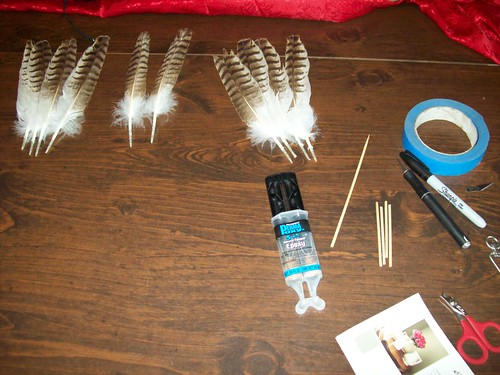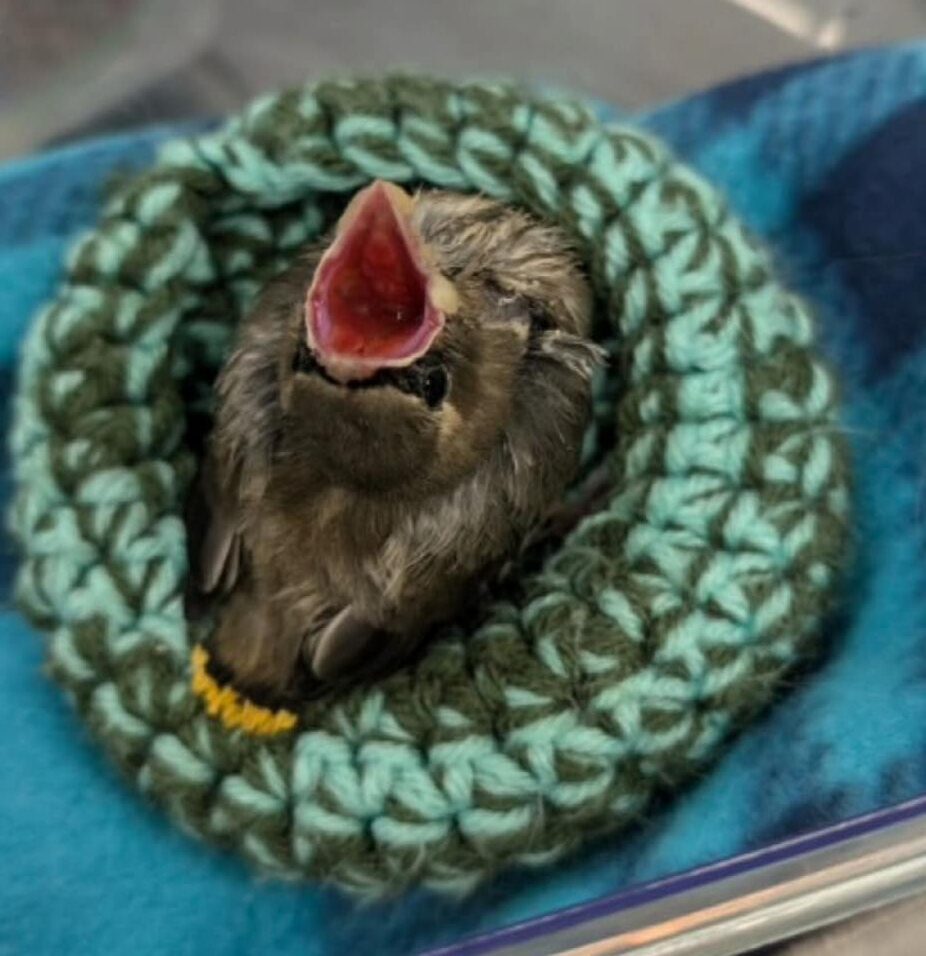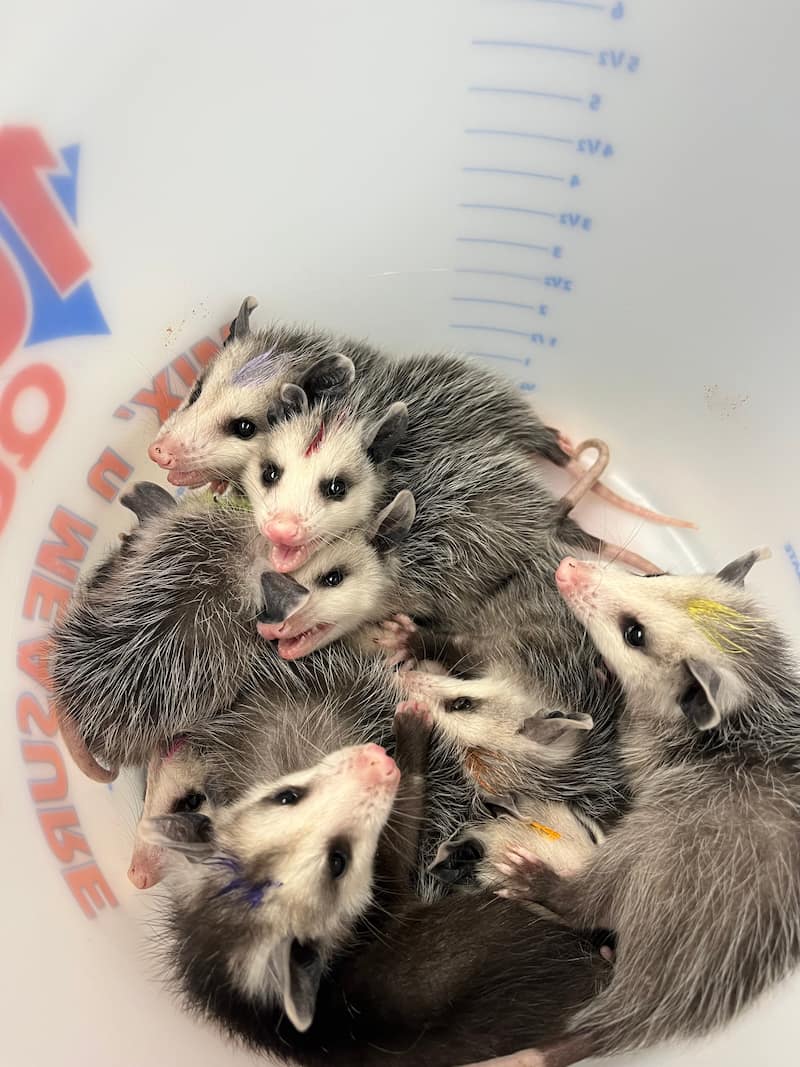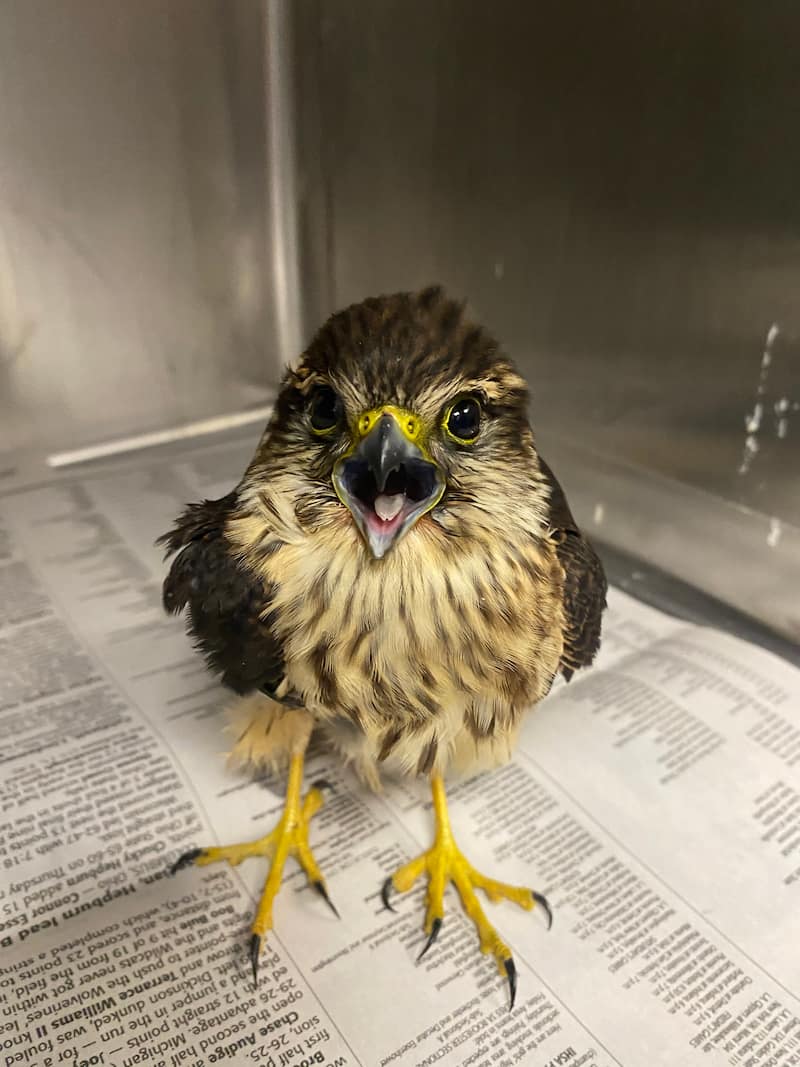by Malky Weil (VM16)
What do you do when an animal comes in with feather damage but no other evidence of trauma? That was the question we asked when we received our Kestrel patient. She had extensive feather damage on her right wing, including broken feather shafts, and loss of primary feathers. She was unable to sustain flight. We took radiographs (x-rays) to see if there was further trauma not visible or palpable to us. We did not see any bone damage or soft tissue damage to the wing. Everything else on her physical exam was normal. Our one challenge was that we could not release her, although presumably healthy, because she could not fly.
We could send her to a rehabilitator and keep her there until she molted and grew in new primary feathers, but that could take up to a year. We were hoping to get her out sooner. So we decided, with the help of the veterinarians, to do a procedure called imping. Imping is a procedure where you find donor feathers, and implant them into the bird, giving them usable feathers to fly with. It seemed like a good idea. We found a deceased kestrel former patient that we could use as a feather donor.
To imp a feather, you cut the patient feather so there is no more damaged feather left, just the top of the shaft. Then you find something to use as an “imping splint”, often bamboo sticks. These fit into the feather shaft of both your donor bird and your patient. They may need to be whittled down to the appropriate size. You cut your donor feathers to the correct length, and then place the splints in them. You then place the splint in the donor feather shaft. You need to be very careful to be using the right number primary feather, since they all have different tasks that help with flight, and make sure your newly placed feather is at the right angle, so the bird will be able to use them for flight. Once you have fit them correctly, you then glue them in.

At that point, you let them dry, help the bird rebuild any muscle loss from lack of flight, and give them time to get used to the extra weight of the imped feathers. Then it’s time to flight test them. If they can fly well enough to escape predators and hunt, you can release them.
We just finished the imping procedure, and will wait and see if it was successful. Hopefully we will be able to send her on her way soon!



